Diptera.info :: Family forums :: Asilidae Forum
Who is here? 1 guest(s)
|
Asilidae, Loire River dunes => Eutolmus cf rufibarbis
|
|
| Susan R Walter |
Posted on 27-06-2014 12:02
|
|
Member Location: Touraine du Sud, central France Posts: 1799 Joined: 14.01.06 |
Can anyone give me some clues about the identity of this couple of Asilidae? Photographed June 2014 in dry grassland on a sand 'dune' at the confluence of the Loire and Vienne rivers in central lowland France. About 20mm long.
Susan R Walter attached the following image:  [110.12Kb] Edited by Susan R Walter on 04-07-2014 07:04 Susan |
| Quaedfliegh |
Posted on 03-07-2014 00:42
|
|
Member Location: Tilburg Netherlands Posts: 2198 Joined: 18.05.10 |
Although no characters are visible to key. This is Eutolmus cf rufibarbis
Greetings, Reinoud Field guide to the robber flies of the Netherlands and Belgium: https://www.jeugdbondsuitgeverij.nl/product/field-guide-to-the-robberflies-of-the-netherlands-and-belgium/ https://www.nev.nl/diptera/ |
| Susan R Walter |
Posted on 04-07-2014 07:01
|
|
Member Location: Touraine du Sud, central France Posts: 1799 Joined: 14.01.06 |
Many thanks Reinoud. What characters should we be looking for? My friend who was with me has other photos we can check, but this is the best of mine. Or do we need specimens (which we don't have)?
Susan |
| Quaedfliegh |
Posted on 04-07-2014 14:39
|
|
Member Location: Tilburg Netherlands Posts: 2198 Joined: 18.05.10 |
Most important in this case are the genitalia, shape of ovipositor and hypopygium.
Greetings, Reinoud Field guide to the robber flies of the Netherlands and Belgium: https://www.jeugdbondsuitgeverij.nl/product/field-guide-to-the-robberflies-of-the-netherlands-and-belgium/ https://www.nev.nl/diptera/ |
| Susan R Walter |
Posted on 10-07-2014 19:58
|
|
Member Location: Touraine du Sud, central France Posts: 1799 Joined: 14.01.06 |
OK, thanks.
Susan |
| ValerioW |
Posted on 10-07-2014 23:05
|
|
Member Location: Padova - Italy Posts: 982 Joined: 01.06.12 |
Quaedfliegh wrote: Most important in this case are the genitalia, shape of ovipositor and hypopygium. Genitalia? In this case? In this photo are both fully covered ... |
|
|
|
| ValerioW |
Posted on 10-07-2014 23:20
|
|
Member Location: Padova - Italy Posts: 982 Joined: 01.06.12 |
Susan R Walter wrote: Many thanks Reinoud. What characters should we be looking for? My friend who was with me has other photos we can check, but this is the best of mine. Or do we need specimens (which we don't have)? First thing to do with any kind of arthropod, after you are sure about family is: 1) determine the subfamily: with asilids useful tools are overall shape (which helps to exclude Leptogastrinae...checking wing's alula or legs' pulvilli can be the best in this case), antennae. (Laphrinae subfamily has no arista), front tibia (i.e. spurs), frons . Genitalia examination comes later, mostly for genus/species IDs. |
|
|
|
| ValerioW |
Posted on 10-07-2014 23:22
|
|
Member Location: Padova - Italy Posts: 982 Joined: 01.06.12 |
Quaedfliegh wrote: Although no characters are visible to key. This is Eutolmus cf rufibarbis C'mon, no character is unbelievable. How can you track an ID of a species without at least few visible characters? ...Thorax? Antennae? Legs? Tarsi? Hairs? Ain't characters? Edited by ValerioW on 10-07-2014 23:23 |
|
|
|
| Quaedfliegh |
Posted on 11-07-2014 01:18
|
|
Member Location: Tilburg Netherlands Posts: 2198 Joined: 18.05.10 |
ValerioW wrote: Susan R Walter wrote: Many thanks Reinoud. What characters should we be looking for? My friend who was with me has other photos we can check, but this is the best of mine. Or do we need specimens (which we don't have)? First thing to do with any kind of arthropod, after you are sure about family is: 1) determine the subfamily: with asilids useful tools are overall shape (which helps to exclude Leptogastrinae...checking wing's alula or legs' pulvilli can be the best in this case), antennae. (Laphrinae subfamily has no arista), front tibia (i.e. spurs), frons . Genitalia examination comes later, mostly for genus/species IDs. ????????????? Susan asked about the characters that should be visible to make a definitive identification, she had more pictures. To me there is no doubt about the fact that these are Asilinae. As you mention the genitalia are important to identify the genus and/or species. As they are not visible i answered Susans's question with just that. You refer to characters of subfamilies that these creatures obviously do not belong to (alula, spurs, pulvilli etc). They simply belong to the Asilinae there is no doubt about that. Especially when we know where the picture has been made. I assume we can agree on Asilinae? What can we see and where and when has the picture been taken....... The picture has been taken in the central lowlands of France the Asilidofauna can be described as NW European and very similar to the Belgian and Dutch situation with some extra species. -The mesonotum is not covered entirely with setae so we can exclude Dysmachus as genus. -The legs are entirely black and shiny with mostly black bristles. (this excludes most other asilinae and we are left with Machimus setibarbis Machimus caliginosus and Eutolmus rufibarbis) -Beard consists for a large part of reddish bristles below a few black ones. (rufibarbis!) we can exclude both Machimus species for they have basicly black beards with only a few light coloured bristles in the lower part) -Mating takes place head to head as Eutolmus rufibarbis does and so even excluding all other subfamilies in NW Europe, which mate in opposite direction as do the the larger Machimus species generally) Why am i 99% sure about Eutolmus? Because i've seen this species hundreds of times (its quite common in NW Europe), also in copula.(http://www.diptera.info/photogallery.php?photo_id=6043 in collection) also in the Loire area. Edited by Quaedfliegh on 11-07-2014 22:02 Greetings, Reinoud Field guide to the robber flies of the Netherlands and Belgium: https://www.jeugdbondsuitgeverij.nl/product/field-guide-to-the-robberflies-of-the-netherlands-and-belgium/ https://www.nev.nl/diptera/ |
| ValerioW |
Posted on 11-07-2014 06:54
|
|
Member Location: Padova - Italy Posts: 982 Joined: 01.06.12 |
Sorry Reinoud if my speech was maybe not bright. The subfamily issue was a general purpose, not only linked to these two on photos. What I was not understanding is why you said 'no visible character' but gave species ID...it sounds contradictory. Perhaps you did't find some keys'trait, but obviously you found something (aka character) that guided you through the solution. And this 'something' are not genitalia, and maybe Susan can check this 'something' too. Hope now I explained myself in a better way  |
|
|
|
| ValerioW |
Posted on 11-07-2014 07:20
|
|
Member Location: Padova - Italy Posts: 982 Joined: 01.06.12 |
Quaedfliegh wrote: Suasan asked about the characters that should be visible to make a definitive identification, she had more pictures. To me there is no doubt about the fact that these are Asilinae. As you mention the genitalia are important to identify the genus and/or species. As they are not visible i answered Susans's question with just that. You refer to characters of subfamilies that these creatures obviously do not belong to (alula, spurs, pulvilli etc). They simply belong to the Asilinae there is no doubt about that. Especially when we know where the picture has been made. I assume we can agree on Asilinae? Reinoud, I assumed that Susan was asking what to check in those further photos to understand the species, and understanding the family is the first step. But if you don't mention subfamily's traits, how can she find them? If i was too rude I apologize to you,it wasn't my intention. |
|
|
|
| Quaedfliegh |
Posted on 17-07-2014 02:37
|
|
Member Location: Tilburg Netherlands Posts: 2198 Joined: 18.05.10 |
Dear Valerio, I have taken some time to reply, i had to count to 10. I even wondered if i had to respond at all. But in my former response i may have overreacted which resulted even in a slightly inaccurate answer and i don't like that. You brought me in a situation where i have to explain/justify myself. In this forum we generally give an ID, if we've got one, without an explanation. In none of your own responses you explain your ID's (neither do i). I could have simply posted: "Eutolmus cf rufibarbis" and you wouldn't have reacted i presume. Personally i would only react if i would disagree about a given ID. If that is the case you could simply ask how i got to the ID. In this particular case, one look at the picture was enough (taken into account place and time) to identify the creatures based on experience with the species. But because we can't see the particulars i had to add a some space and added the cf. You are right about the fact that characters are visible but simply not the ones needed to to give an ID on species level. And that was what i was referring to with "no visible characters". I could eliminate most alternatives based on visible characters and experience did the rest. To answer your last question, i gave an ID and Susan can compare the other available pictures with descriptions or pictures of E. rufibarbis and the result can be yes or no. In the last case we might have a closer look and another discussion. Greetings, Reinoud Field guide to the robber flies of the Netherlands and Belgium: https://www.jeugdbondsuitgeverij.nl/product/field-guide-to-the-robberflies-of-the-netherlands-and-belgium/ https://www.nev.nl/diptera/ |
| ValerioW |
Posted on 17-07-2014 07:45
|
|
Member Location: Padova - Italy Posts: 982 Joined: 01.06.12 |
Quaedfliegh wrote: You brought me in a situation where i have to explain/justify myself. Sorry Reinoud, it was not my intention at all. I had another purpose, that I thought could be useful. I just wanted to know (as Susan, I think) morphological details about this species, that maybe you know and that are not easy accessible to many (me too). But after reading again the discussion, I realize that my pressing was excessive. What you said about too sudden answers is right; there's need to calibrate and elaborate them, because otherwise the risk of misunderstanding is high. Again, sorry. Quaedfliegh wrote: In this forum we generally give an ID, if we've got one, without an explanation. In none of your own responses you explain your ID's (neither do i). Yes, you're right (...even if I often give explanations). But Susan asked for some tips, and I was interested in them too, that's why I insisted to know them. Eutolmus spp. are generally similar to Machimus spp. (personally my ID could be "Machimus complex", which includes also Eutolmus and Tolmerus), and I hoped you could provide some extra-info. Quaedfliegh wrote: I could have simply posted: "Eutolmus cf rufibarbis" and you wouldn't have reacted i presume. Personally i would only react if i would disagree about a given ID. If that is the case you could simply ask how i got to the ID. Paradoxically I thought that asking something like "how you got the ID?" could sound like "do you have any proof?"... quite disturbing, and sounds like courthouse's trial. Anyways I'm sorry about that Reinoud. Best regards Edited by ValerioW on 17-07-2014 09:25 |
|
|
|
| Jump to Forum: |



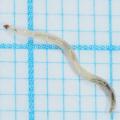
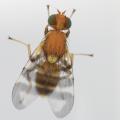
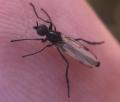
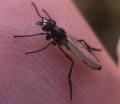
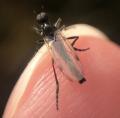
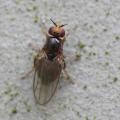


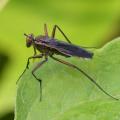


 but don't see the image in the post.
but don't see the image in the post.